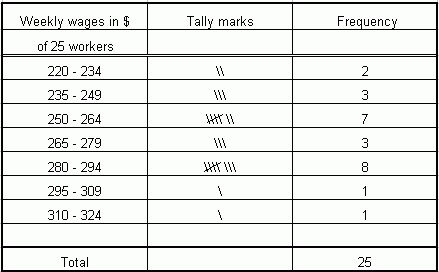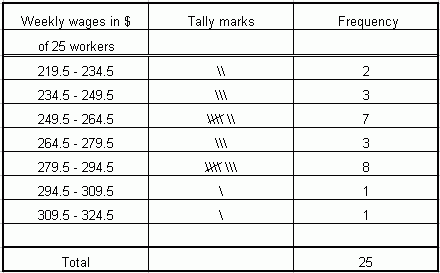5. Differentiate between the following with the help of examples:
(a) Geographical and chronological classification
(b) Exclusive and inclusive series
Dear Student
PART A
PART B
Inclusive Class Interval:
When the lower and the upper class limit is included, then it is an inclusive class interval. For example - 220 - 234, 235 - 249 ..... etc. are inclusive type of class intervals. Usually in the case of discrete variate, inclusive type of class intervals are used.
Exclusive Class Interval:
When the lower limit is included, but the upper limit is excluded, then it is an exclusive class interval. For example - 150 - 153, 153 - 156.....etc are exclusive type of class intervals. In the class interval 150 - 153, 150 is included but 153 is excluded.
Usually in the case of continuous variate, exclusive type of class intervals are used.
Consider the frequency table shown below

This can be done by extending the class intervals from both the ends. Thus the class intervals 220 - 234, 235 - 249, ....... should be converted into exclusive type 219.5 - 234.5, 234.5 - 249.5.... etc.
After the conversion the frequency table would look like this

Kindly send different questions in different sets, so that your query can be solved.
Regards
PART A
| S.NO. | GEOGRAPHICAL CLASSIFICATION | CHRONOLOGICAL CLASSIFICATION |
| 1 | Under this type of classification, the data are classified on the basis of area or place | Under this type of classification, the data collected are classified on the basis of time of their occurrence |
| 2 | as such, this type of classification is also known as areal or spatial classification | As such, the series obtained under this classification is purely known as a time series |
| 3 | in case of reference tables, alphabetical arrangements are made while in case of summary tables, ranking arrangements are made. | The different classes obtained under this classification are arranged in order of the time |
| 4 | For the purpose of ready reference and ranking, the different classes form under the classification should be arranged in order of their alphabets or size of the frequencies respectively | It may begin either with the earliest, or the latest period. |
| 5 | The areas may be in terms of countries, states, districts, or zones according as the data are distributed. FOR EXAMPLE, students of universities IN INDIA | This type of classification is suitable for chose data which take place in course of time viz. FOR EXAMPLE population, production, sales, results etc |
Inclusive Class Interval:
When the lower and the upper class limit is included, then it is an inclusive class interval. For example - 220 - 234, 235 - 249 ..... etc. are inclusive type of class intervals. Usually in the case of discrete variate, inclusive type of class intervals are used.
Exclusive Class Interval:
When the lower limit is included, but the upper limit is excluded, then it is an exclusive class interval. For example - 150 - 153, 153 - 156.....etc are exclusive type of class intervals. In the class interval 150 - 153, 150 is included but 153 is excluded.
Usually in the case of continuous variate, exclusive type of class intervals are used.
Consider the frequency table shown below

This can be done by extending the class intervals from both the ends. Thus the class intervals 220 - 234, 235 - 249, ....... should be converted into exclusive type 219.5 - 234.5, 234.5 - 249.5.... etc.
After the conversion the frequency table would look like this

Kindly send different questions in different sets, so that your query can be solved.
Regards



